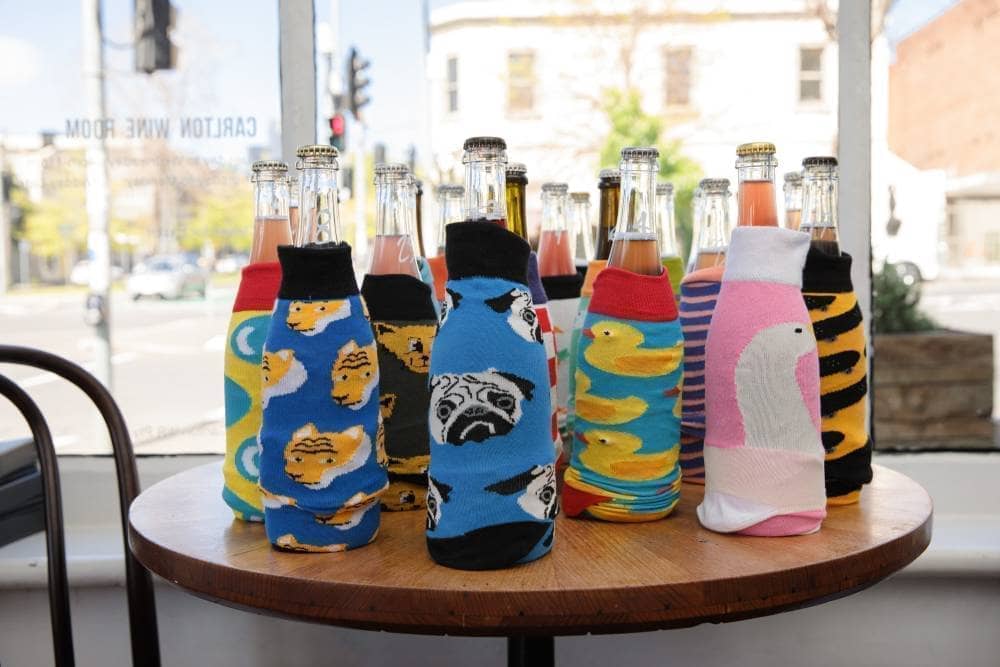Gamay – the sole red grape of Beaujolais – has had a slowish start in this country, but enthusiasm is rapidly growing. The potential for it to make engagingly distinctive wine is key, but the grape is also a lot less fickle than its cousin pinot noir, with sites and seasons too cool or too warm for pinot still capable of making top-flight gamay.
Also known as
Although there are hundreds of synonyms for gamay, it doesn’t have many that are likely to confuse wine lovers when looking at a bottle, although the name gamay noir will sometimes be seen on a label, which is simply its full scientific handle. In fact, gamay noir à jus blanc is its full accepted name, which is primarily used to distinguish itself categorically from grapes that sometimes use the gamay name but are unrelated.
What gamay tastes like
Gamay’s flavours tend to be a bit fuller than pinot noir, with riper more luscious forest berries and flashes of violets quite common. It also commonly displays fruit in a cherry spectrum, both red and black, depending on ripeness. It’s a variety that holds acidity quite well, so can it be fresh, and it often has quite a bit of tannin, which is very apparent in the more serious and age-worthy bottlings. Like pinot noir, it can also be quite transparent in its reflection of terroir, with minerality often on show.
Vineyard & winemaking
Gamay, though related to pinot noir and having some similarities, is notably different. Gamay ripens a bit earlier than pinot noir, and it can produce a higher crop, so it’s suited to cool conditions where vigour and ripeness are moderated. But it’s also a variety that holds its acid well and performs well in warmer sites, so it will become increasingly important as some traditional pinot noir areas become too warm on average for quality production, such as the warmer sections of the Yarra Valley. Gamay is often associated with the carbonic maceration process of making red wine, whereby whole bunches are fermented in a closed vessel. The juice ferments mainly within the berries, resulting in very bright and fruit-forward expressions. These methods can be used to make simple wines and also to add freshness as a component of much more complex wines. Whether light and bright or more serious, gamay is primarily made into red wine. Beaujolais produces a reasonable amount of rosé from gamay, but you’re less likely to see pink gamay in the New World.
Where is gamay grown?
Gamay is the sole red grape of Beaujolais, which is sandwiched between Burgundy to the north and the Rhône Valley to the south. Gamay is therefore responsible for both the fun and frivolous wines of Beaujolais Nouveau, as well as some very serious cru wines grown on the largely granitic soils of its 10 Village communes. The name of the grape actually comes from a Village in Burgundy, though it only now contributes to the lowly Passetoutgrains, a simple blend of pinot noir and gamay. Gamay also has a large presence in the Loire Valley, where it is the dominant red grape in Touraine. It plays solo there and also gets blended with malbec (called cot locally) and cabernet franc. Gamay also crops up in many other regions across France, though in much lower concentrations.
Gamay around the world
Gamay has made a bit of a home for itself in California and more substantially further north in Oregon in the Willamette Valley, as well as in Washington State. Aside from this, Australia has probably the most established plantings, with many more on the way.
Gamay in Australia
It’s thought that the legendary wine impresario Len Evans planted Australia’s first gamay, committing vines to soil on his Hunter Valley property in the mid-1970s. That was only a few rows, with Bass Phillip’s Phillip Jones planting a little, though not a lot, more in 1998, and Sorrenberg’s vines panted around the same time. Eldridge Estate, somewhat of a gamay specialist, planted theirs around 2000. Although it’s more hardy than pinot noir, gamay is still a cool climate variety, with many vineyards in Tasmania, the Yarra Valley, Mornington Peninsula, Gippsland and the Adelaide Hills having been planted of late, so expect many more wines in the market soon.
Checkout our Deep Dive into varietal Australian gamay, here.
Some of the best Australian gamay
Bass Phillip
By Farr & Farr Rising
De Bortoli
Domaine Simha
Eldridge Estate
Lyons Will
Mayer
Meadowbank
Mutual Promise
Ochota Barrels
Punt Road
Ravensworth
Thick as Thieves
Tyrrell’s
Sinapius
Sorrenberg


